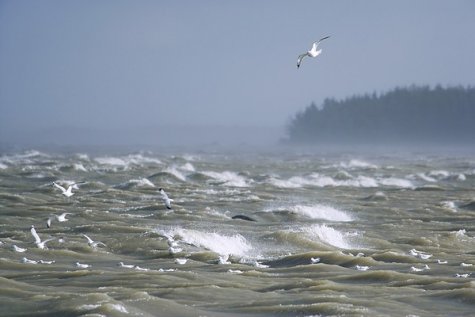November takes away our mew gulls
Photo: Arne Ader
Translation: Liis
Mew gulls in stormy sea. Austurgrunne, Vormsi
Mew gull; Common gull Kalakajakas Larus canus
Our most numerous gull species can still be seen in quite large numbers both on the coast and at inland waters. They wait in groups for suitable winds from the north for flying away.
The mew gull is a small gull, and the one who escorts ships setting out to sea. In flight view we see the contrasting black wing tips with a few small white patches on the underside of the wings. The white gull has a grey mantle, white head, dark eyes, yellow beak, feet are greyish yellow. The female’s and male’s plumage are similar. Young birds are dark greyish-brown, tail white with a broad black band, and feet greyish.
The number of winterers depends of course on the weather; from a thousand up to ten thousand birds may stay here. In the winter plumage we see small dark grey streaks on the white head of the adults.
A novice birding enthusiast may confuse the mew gull with a herring gull: the herring gull is slightly less than twice the size of the mew gull, the herring gull’s beak is yellow but with a red patch, the feet pale pink and the eyes light-coloured.









